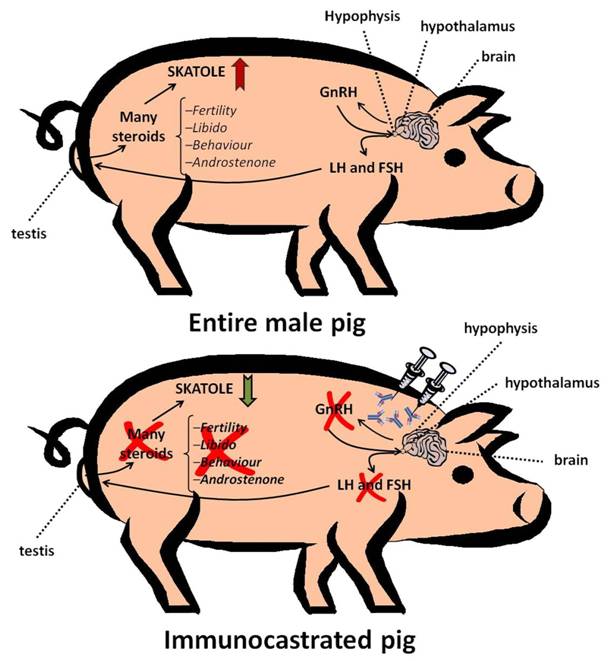Immunocastration
The aim of immunocastration is to inhibit testicular development and functions via neutralisation of gonadotropin releasing hormone (GnRH) by specific antibodies. Neutralisation of this hormone by immunological means blocks the development and function of the testes, and thereby prevents problems of boar taint in the meat. Immunisation just before puberty has proved to be a successful method of inhibiting sexual development of male pigs. One aspect to be considered for the effectiveness of vaccines against GnRH is the number of injections needed for effective immunisation. Normally the schedule of immunisation includes two vaccinations at 4 to 6 weeks interval, the last given not later than 4 to 5 weeks prior to slaughter, to allow any boar taint substance to be eliminated.
Since May 2009, immunological castration has been approved for use in all EU countries.
Advantages and Disadvantages compared to surgical castration without anaesthesia:
1 |
Compared to surgical castration without anaesthesia, what do you expect the advantages and disadvantages of immunocastration to be? |
If you need help with the answer to the above question, click here to see the answer.
